
Remember the Unihertz Atom? The tiny Android phone released in 2018. I remember it well – I was still interning at MobileSyrup back then, so I didn’t review it, but I remember playing around with the Atom and being really impressed by its small size.
Fast forward to 2023, and it turns out Unihertz is still committed to making tiny smartphones, such as the Jelly 2 and 2E. The company’s latest small telephone is the Jelly Star. It’s not available yet — Unihertz has a now-funded Kickstarter campaign going on now and if you pledge money, you can get a Jelly Star at a discounted price. Currently, to get one Jelly Star, it costs about $224 CAD through Kickstarter with a 26 percent discount (or $302.70 normally, though it’s not clear what the actual price will be when the Jelly Star launches).
Update August 21st, 2023 at 9:52am ET: Unihertz now has an official store page for the Jelly Star following its successful Kickstarter campaign. On the Unihertz website, the phone costs $229.99 USD but is currently on sale for $199.99 USD (about $311.81 CAD and $271 CAD, respectively). You can check it out here.
But is the Jelly Star worth the money? Ultimately, it depends a lot on what you want out of the phone. In my time with it, I thought the Jelly Star worked well for the price, but I also found it really difficult to use as my daily driver because of the size. Though I might be a proponent of smaller phones, there is a limit to how small you can go before it stops being functional.
Ultimately, I think prospective Jelly Star customers should consider whether they’re looking for a device that will help curb their smartphone use, as that seems like the ideal way to use it.
Specs
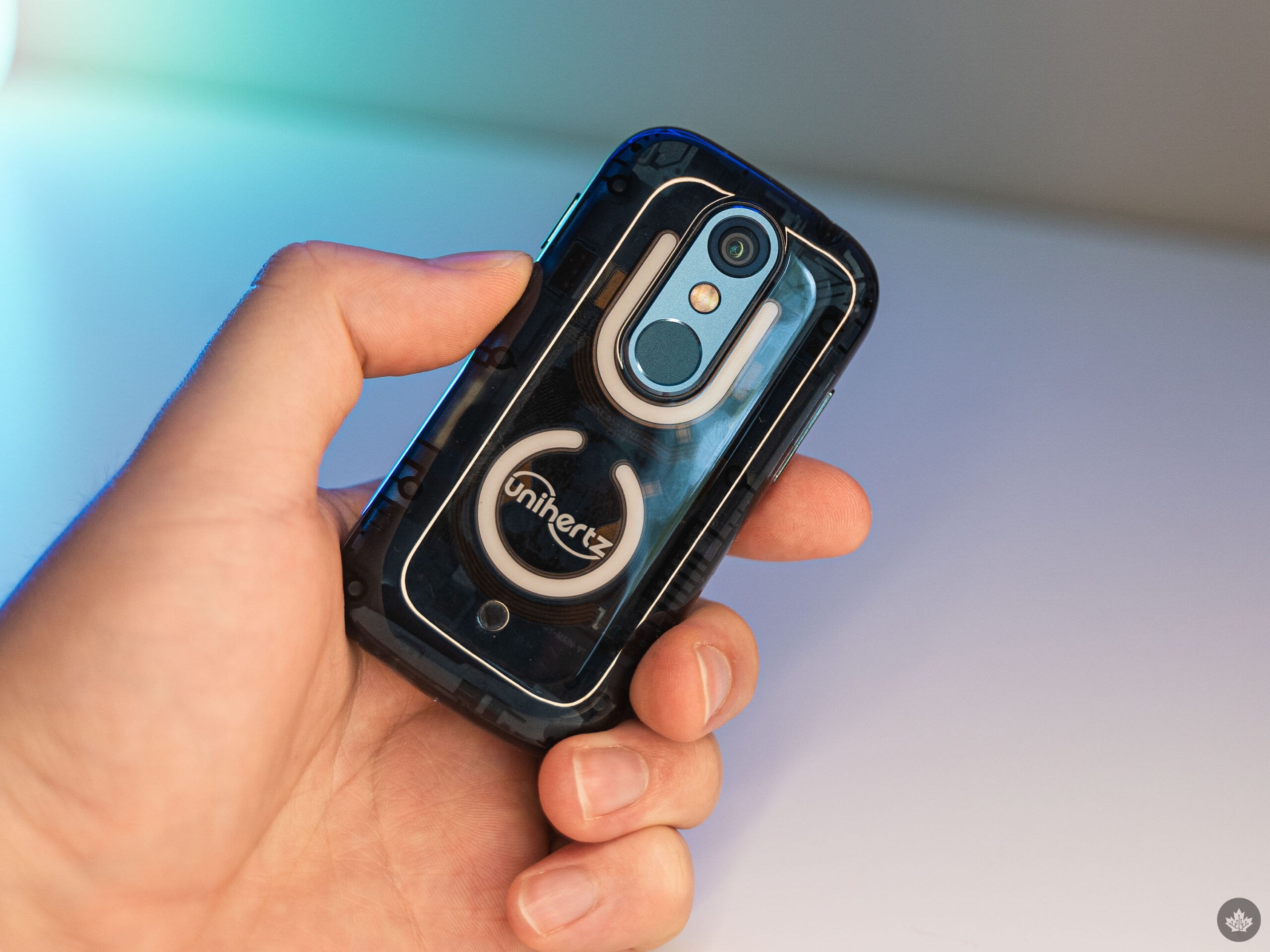
Unihertz Jelly Star
Display
3-inch LCD display 480 x 854 pixels
Processor
MediaTek Helio G99
RAM
8GB
Storage
256GB UFS 2.2, microSD card
Dimensions (in.)
95.1x49.6x18.7mm
Weight
116g
Rear Facing Camera
48-megapixel
Front Facing Camera
8-megapixel
OS
Android 13
Battery
2,000mAh
Network Connectivity
2G, 3G, 4G, LTE
Sensors
Fingerprint (rear), G-Sensor, Compass, Gyroscope, Proximity, Ambient light
SIM Type
Nano SIM
Launch Date
Misc
Colours: Red, Blue
Display
Unihertz Jelly Star
3-inch LCD display 480 x 854 pixels
Processor
Unihertz Jelly Star
MediaTek Helio G99
RAM
Unihertz Jelly Star
8GB
Storage
Unihertz Jelly Star
256GB UFS 2.2, microSD card
Dimensions (in.)
Unihertz Jelly Star
95.1x49.6x18.7mm
Weight
Unihertz Jelly Star
116g
Rear Facing Camera
Unihertz Jelly Star
48-megapixel
Front Facing Camera
Unihertz Jelly Star
8-megapixel
OS
Unihertz Jelly Star
Android 13
Battery
Unihertz Jelly Star
2,000mAh
Network Connectivity
Unihertz Jelly Star
2G, 3G, 4G, LTE
Sensors
Unihertz Jelly Star
Fingerprint (rear), G-Sensor, Compass, Gyroscope, Proximity, Ambient light
SIM Type
Unihertz Jelly Star
Nano SIM
Launch Date
Unihertz Jelly Star
Misc
Unihertz Jelly Star
Colours: Red, Blue
Design
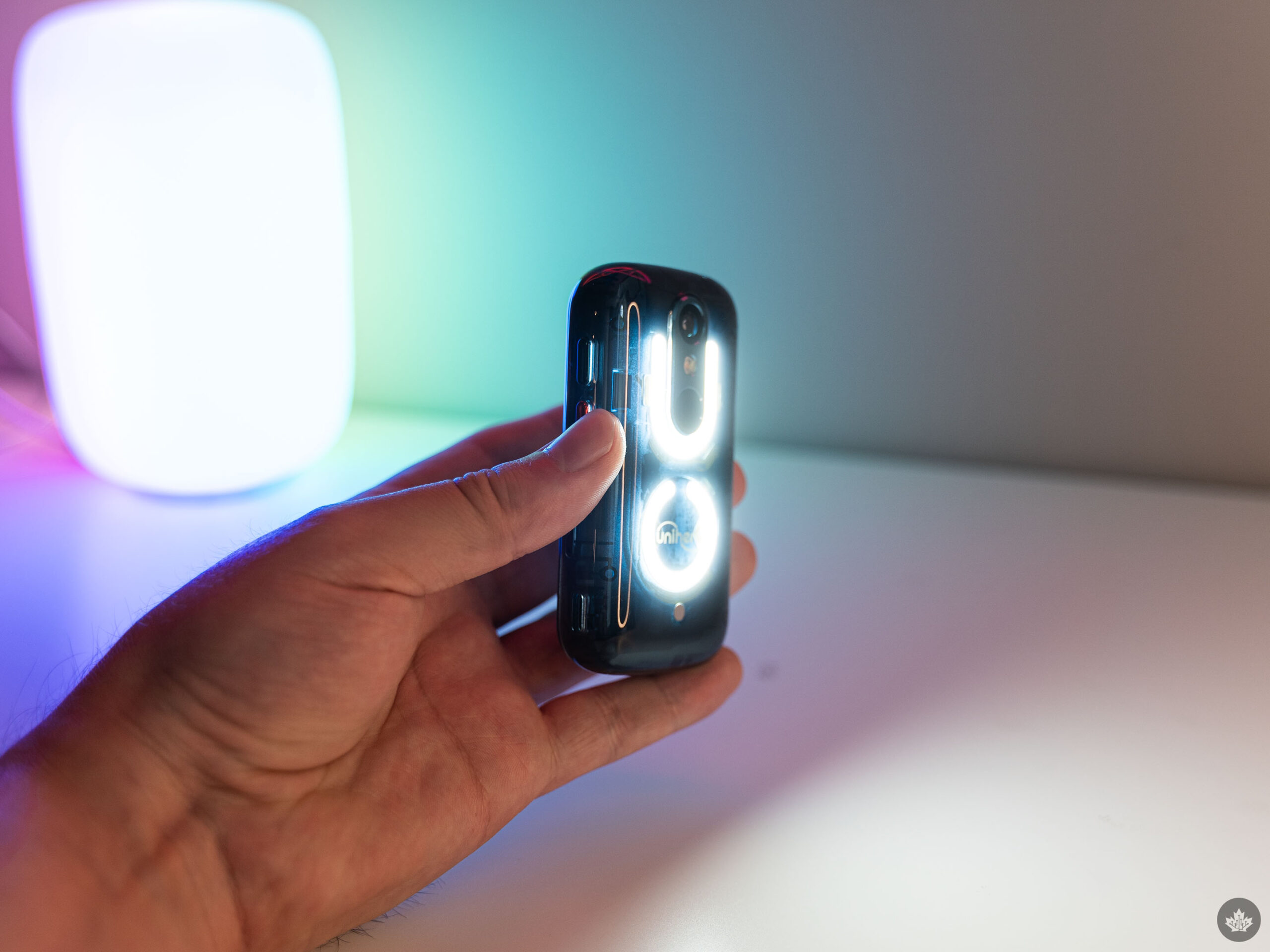
My favourite part of the Jelly Star is the design. And no, I’m not just talking about the size (although the phone is admittedly adorable). What really does it for me is the semi-transparent housing, which comes in two colours, per the Kickstarter page, blue and red – I tried the blue.
The Jelly Star only reinforces my belief that all tech should have at least one semi-transparent option. Nothing beats being able to see all the intricate circuitry inside. I love it.
Beyond that, the Jelly Star takes a page out of the Nothing playbook and added LED lights to the back of the device. There are two LED light bars, one shaped like a ‘U’ and the other like an ‘O.’ While neat, the LEDs aren’t all that useful in practice beyond as a nicer flashlight option than the camera flash. You can set them to light up with notifications, but the Jelly Star also offers a traditional notification LED that can use colours to indicate different notifications. The rear LEDs can also light up when charging, do a music visualization and more.
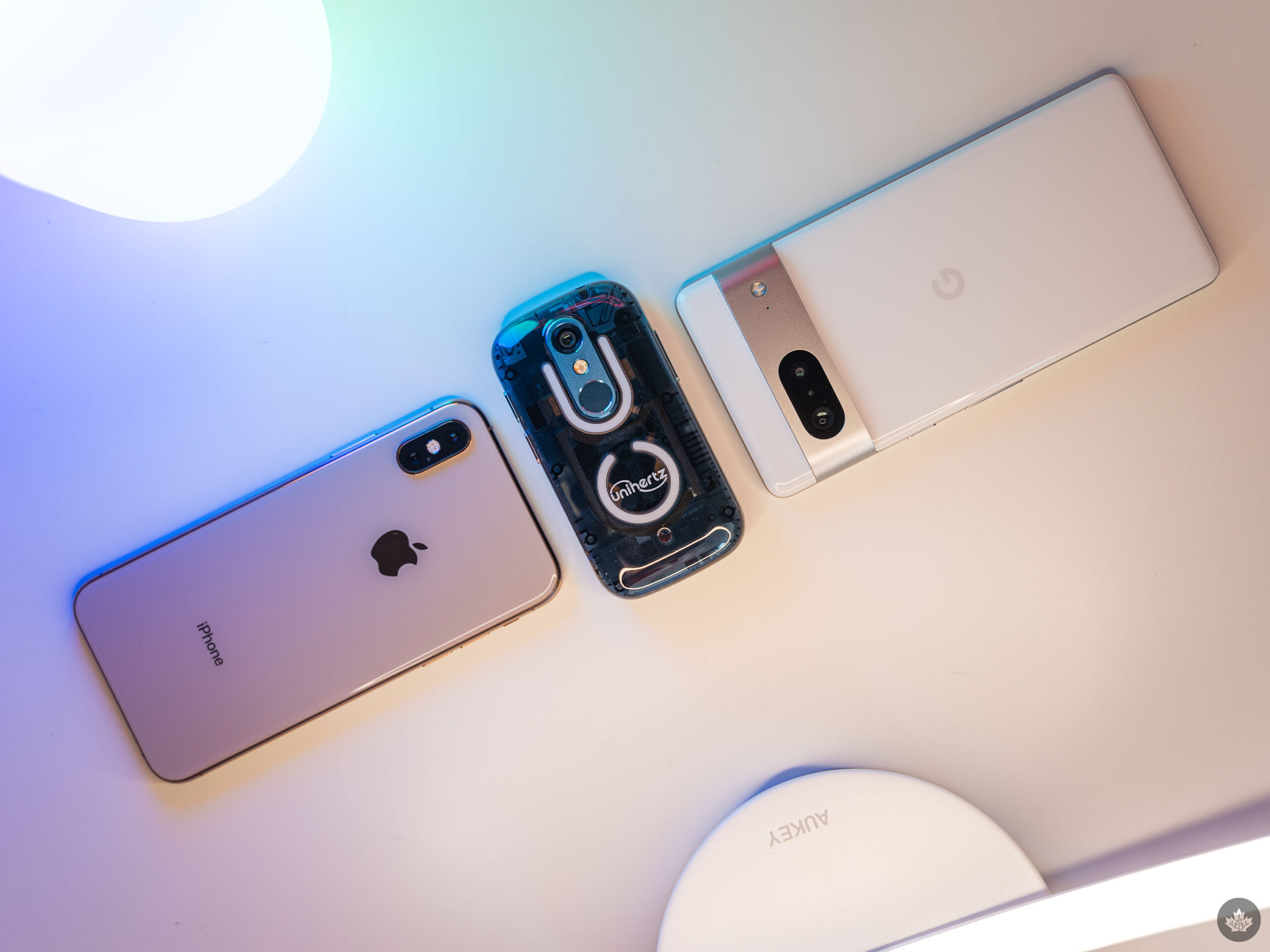
Unihertz also takes an “everything but the kitchen sink” approach to the Jelly Star, jamming it full of features that other smartphone makers have long since abandoned. There’s a 3.5mm headphone jack, a microSD card slot in the SIM tray, a programmable button, and capacitive buttons for home/back/multitasking (or you can use gesture notifications instead). The phone also boasts a rear-mounted fingerprint sensor, which worked really well for me.
Decent performance for the size
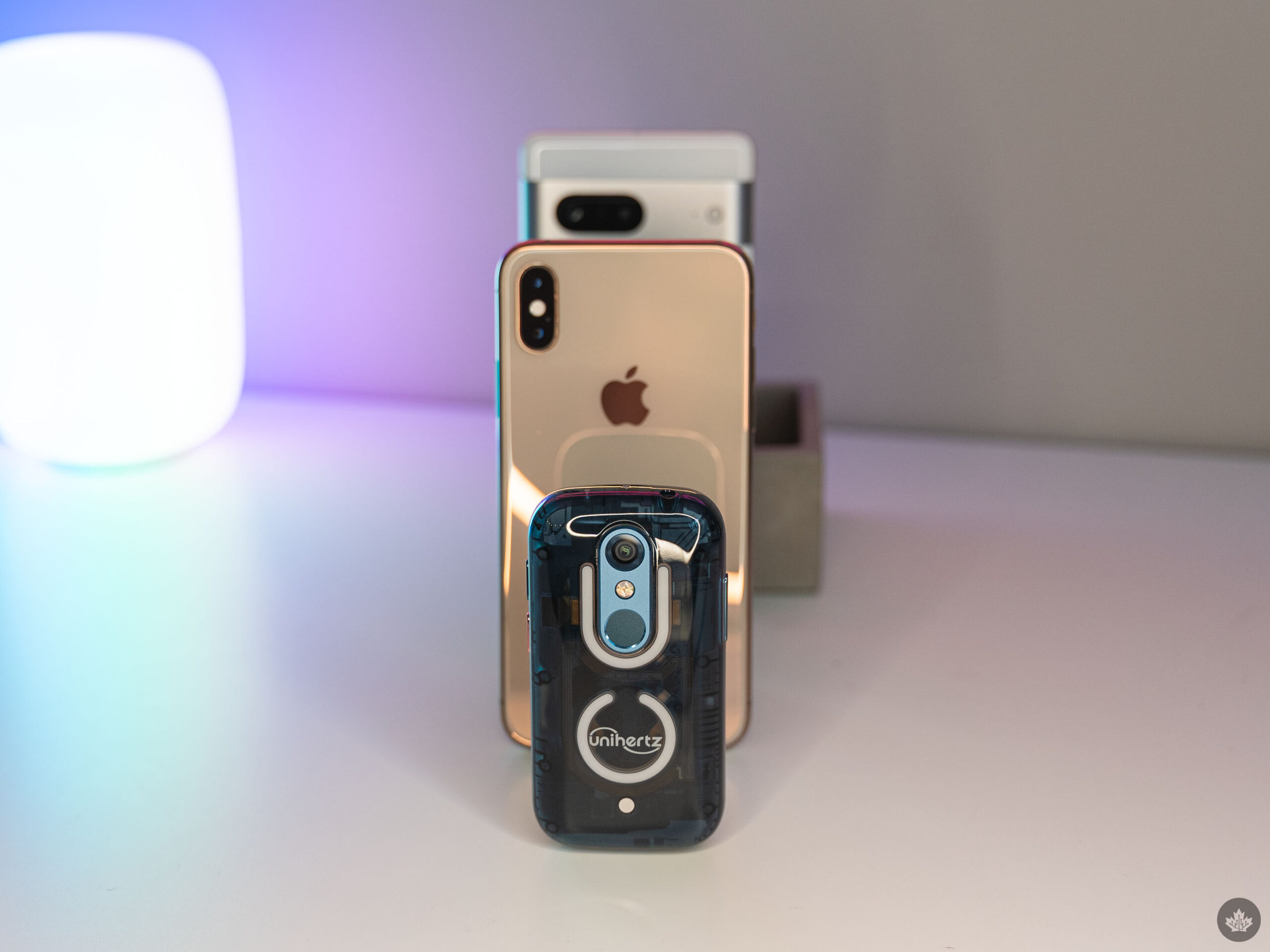
While the Jelly Star might not be the most powerful smartphone out there, it held up well in my testing. At least, it did for the few apps that you can use on such a tiny screen.
Despite some of the marketing on the Kickstarter pitching the Jelly Star as an option for gaming, its size renders it ‘ungameable’ in my eyes. Most mobile games will likely run fine, but I can’t imagine the experience being very good on the 3-inch display, especially when most games require touch input, meaning your thumbs will get in the way even more than on other phones.
I tested out my typical gamut of apps – social media like Twitter, messaging, some light web browsing – and they were all fairly smooth. Even TikTok works well, though you may need to squint to see what’s going on in a video. Aside from real-world use, a Geekbcnh 6 test saw the Jelly Star score 730 for single-core and 2,020 for multi-core, putting it well below most other phones we’ve tested – comparable devices include the Pixel 4 and original Surface Duo.
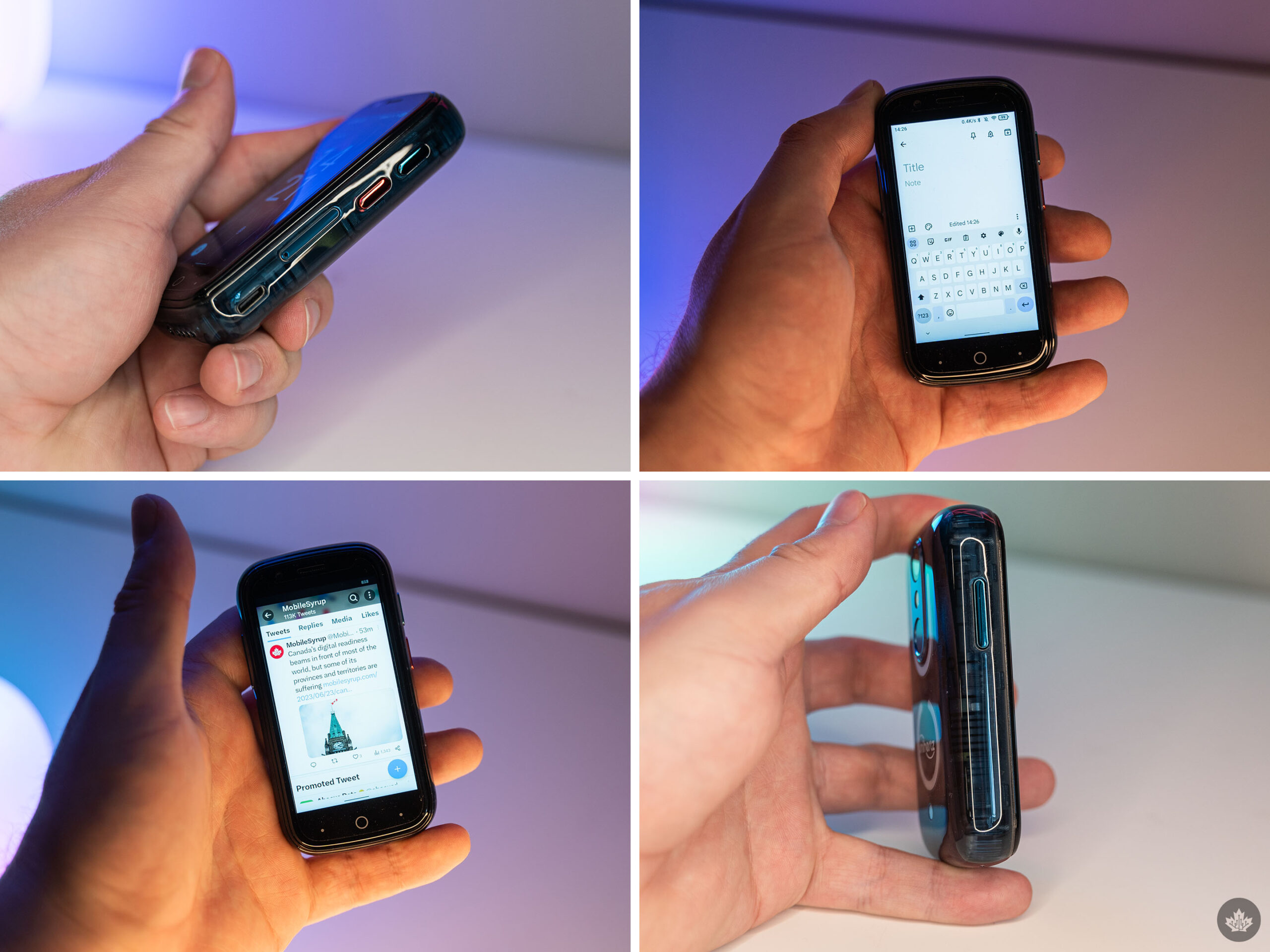
Another thing that helps with the performance is Unihertz didn’t go overboard with the Jelly Star’s skin. It’s basically stock Android 13 with a handful of extra apps and features tossed in, such as an FM Radio app, a digital toolbox with stuff like a compass and bubble, and a remote to control your TV.
However, I couldn’t bring myself to fully commit to the Jelly Star and abandon my normal smartphone because the size kept getting in the way. I could text if I ditched the keyboard for voice-to-text, and I could scroll social media one post at a time. Heck, the calling was even crystal clear and sounded great talking to my wife. But the experience overall just wasn’t for me.
One other thing of note, Unihertz lists Rogers and Telus as supported carriers on its Kickstarter page. I tried my Rogers-owned Fido SIM in the Jelly Star and it worked fine, but I didn’t have a Telus or Bell SIM to test with. I expect the phone would work fine on the Telus network and on the various subsidiaries that also use it, like Koodo and Public Mobile since Unihertz explicitly mentions that, but I can’t say if the same holds true for Bell. If you’re concerned, you can wait until the Jelly Star is out and see if Unihertz’s Telecom Compatibility page gets updated with details about the phone and whether it works on the Bell network.
Camera
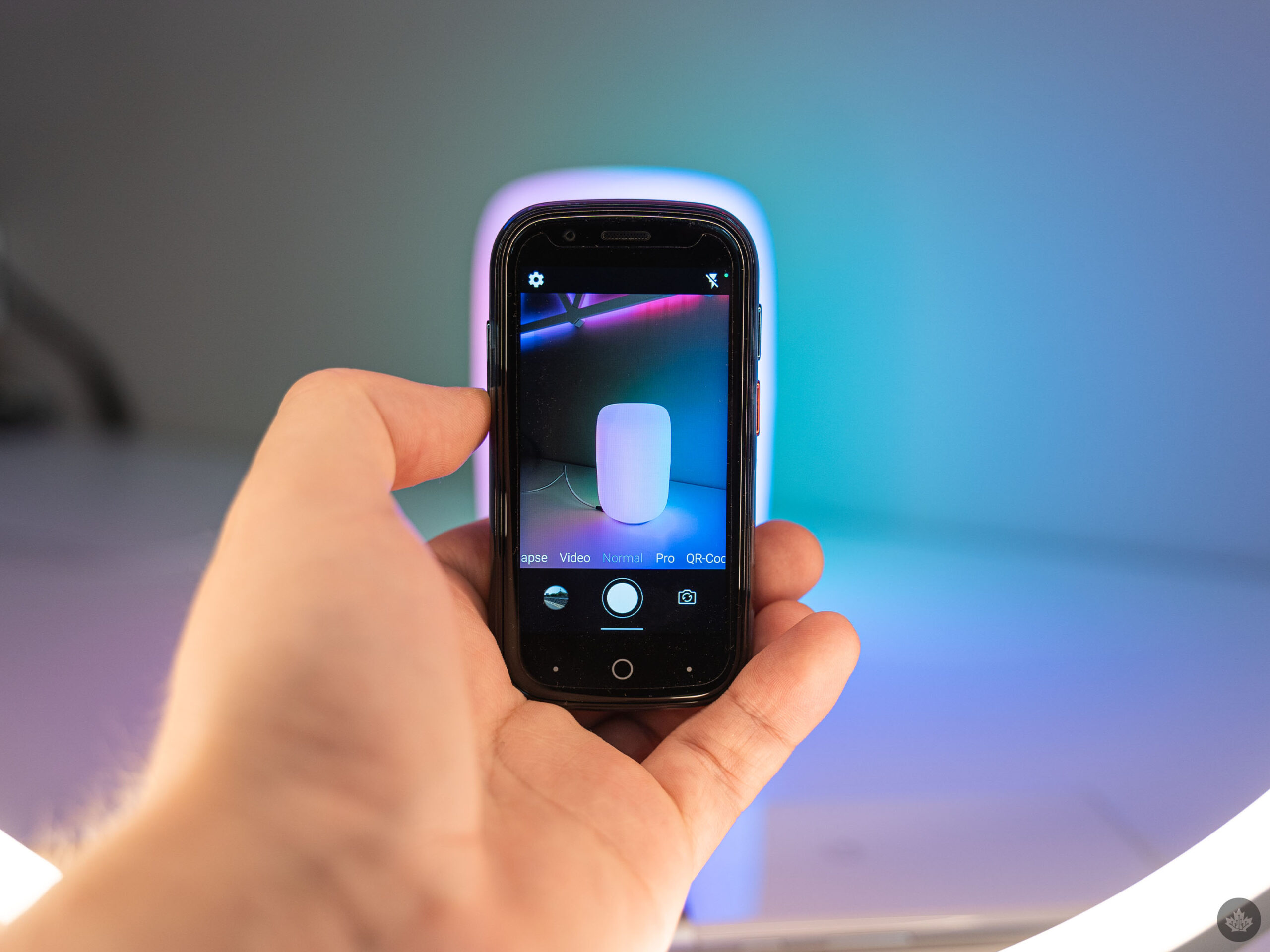
After how disappointing the Unihertz Titan Slim was in the camera department, I didn’t have high hopes when it came to the camera on the Jelly Star, but I was pleasantly surprised by the output from its single 48-megapixel rear camera. The Jelly Star certainly isn’t perfect, and it won’t be winning any camera crowns, but it was able to snap some decent shots.
![]()
The most significant issues I ran into were with the autofocus whiffing on occasion and the colours sometimes being way off. In the comparison shots above and below, the Pixel 7a was much closer to the real-life look than the Jelly Star was.
![]()
The autofocus issue mostly came down to me being impatient. I found I had to give the Jelly Star a little more time to lock in before I hit the shutter button. Still, the issue can be frustrating when you’re trying to capture something moving fast.
Exposure also seemed to be a struggle, with the camera sometimes producing images that were too dark. Several of the images have an almost hazy quality to them as well. Zoom images weren’t great either, and it’s worth noting the only way to zoom is through pinch-to-zoom, which I found really tricky to do on the tiny screen.
Overall, the Jelly Star isn’t really the best option if you’re looking for a phone with a reliable camera. It can work well in a pinch – the best camera is the one you have on you, after all – but when I needed to take a picture with my phone, I seldom reached for the Jelly Star.
Could it be too tiny?
As I said up top, the Jelly Star likely isn’t a great phone for most people. Based on my time with it, I think it’s best viewed as a niche device for those looking for something very specific.
One of the best uses I can think of is as a smartphone to help you use your smartphone less. While that may sound like an insult, it’s not – the small size of the Jelly Star enables a unique experience where you can do everything you normally would on a smartphone, but it’s less accessible overall. If you can’t stop scrolling Twitter, maybe being forced to look at one tweet at a time on a tiny screen will help.
Alternatively, the Jelly Star could fill a role as the ultimate “social” phone. Instead of a big, tempting smartphone with all these cool apps, you’ve got a tiny little thing that isn’t very convenient to use. Without the temptation, maybe you’ll live in the moment more and focus on the people you’re with, rather than the virtual friends in your apps.
Or maybe it’s just a tiny phone for people who truly hate big phones. Whatever the case, I know the Jelly Star isn’t for me.
A tiny phone for people who truly hate big phones.
MobileSyrup may earn a commission from purchases made via our links, which helps fund the journalism we provide free on our website. These links do not influence our editorial content. Support us here.





















